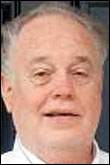

Retired pastor recalls life in Cuba before and after the revolution.
By: Pablo Ros.
One of the things that Obdulio Seguí hopes his native Cuba will never lose is its "joviality”. "Cuba hasn't lost its joviality, even while facing the current adversities," Seguí said. "People in Cuba laugh at their own tragedies."
Seguí, who was born in the late 1930s in Havana, recalled what the island's capital was like then.
"I have some very beautiful memories," he said in his Niles home last week. "It was a happy city, with a powerful economy, a city where the middle class predominated. The gap between the rich and the poor was not as wide as it is now."
Seguí was from a middle-class family but grew up in the streets of Havana and became a born-again Christian at a young age, in part because he wanted to change his life. “I sought the church because I felt God's calling," he said.
He was 14 years old and had never practiced religion. He only recalls listening to his grandmother's Bible stories as a child. He was baptized at 16 and became a Seventh day Adventist.
Cuba in the 1940s was, economically and politically, one of the most important cities in Latin America and had been so for most of its history.
Even when the Spanish first settled in Cuba in 1511, the island played an important role. It was there that they set up informal headquarters and set off on their conquest of America.
And while Cuba never attracted the Spanish for its natural resources -- it had none of the gold and silver of Mexico or Peru -- it did eventually lead to the rise of Havana as the most important trading port out of New Spain. By the 17th century, Havana was called the "Key of the New World" by the King of Spain. It continued to flourish even after the British took control of the city in the 18th century, and was known in the early 19th century as "Paris of the Antilles."
When Seguí was in college, in the late 1950s, the Revolution began. "It was beautiful because youth was fighting for its ideals," he recalls. "It wasn't for material or economic interests; it was to free Cuba from a dictatorship. "American-backed dictator Fulgencio Batista then ruled the island. Seguí was enrolled in business school. Batista closed the school because many of the students had joined the revolution. Seguí said his religion kept him from joining.
Seguí said he was unable to finish his studies just three months before he was scheduled to graduate, and so opted to join a religious school where he studied theology and became a pastor. Being a pastor after the revolution wasn't easy, Seguí recalled. While churches were lawful under Fidel Castro's regime, pastors could be imprisoned if they were suspected of preaching anywhere outside their parishes.” Proselytism was prohibited. Therefore, my work was prohibited," Seguí said.
Most new converts were friends or family members of parishioners, he said.
In 1982, Seguí, his wife, the late Elsa Seguí, and their three daughters -- Ileana, Ivette and Ivonne -- came to the States. Seguí studied theology at Andrews University in Berrien Springs and later worked as a pastor in New York, Atlanta and Grand Rapids until he retired in 2002.
Now, when because of Castro's illness, Cuba's future is perhaps more unstable than at any other time since Seguí left Cuba, Seguí hopes that whatever happens, whatever changes, the Cuban people will retain their unbreakable sense of optimism.
Versión en Español hacienda click en el título del artículo.
Photo: Pastor Segui.
No hay comentarios:
Publicar un comentario